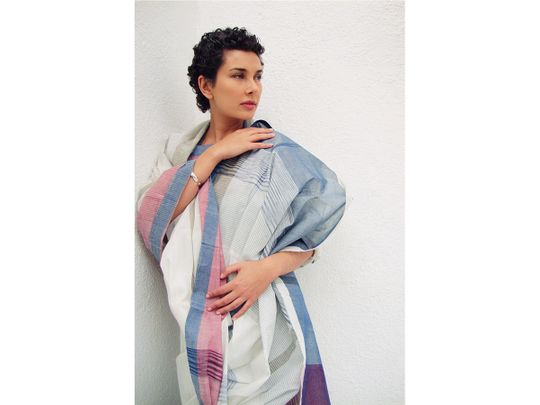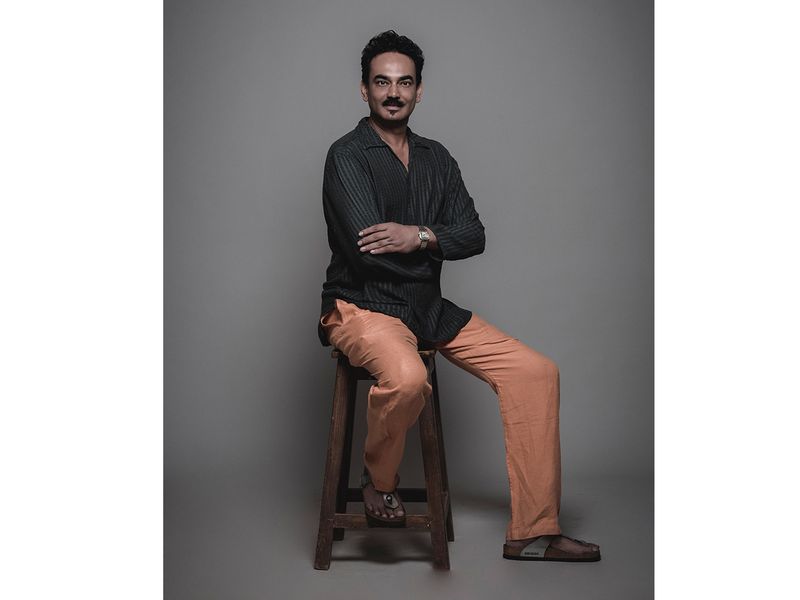
Goa is the smallest state in India with an area of just 3,702 square kilometres. From the Arabian Sea to the Western ghats, the borders of Maharashtra near Pernem and Karnataka fringing Canacona, this tiny precious tear drop of land has gifted the country a plethora of talent. This includes the likes of architect Charles Correa, illustrator Mario Miranda, writers Dom Moraes and Frank Simoes, musician Remo Fernandes, painters FN Souza and Laxman Pai, and music composers Chris Perry and Anthony Gonsalves. But away from the glory and fame, hidden in the hills are Goa’s tribes, the original inhabitants of this land, with a rich and ancient heritage contributing to the state’s legacy, the language they speak to the clothes they wear.
When I pondered on India’s huge archive of clothing, textiles, saris and dye techniques across a legacy 6,000 years old, I bemoaned the loss of the only Goan sari the state had. The Kunbi sari disappeared from being woven in the state for two main reasons - the coloniser and caste.
Post-liberation, in 1961, when Goa joined the country, no one did a revival project for the Kunbi sari. I decided it was time to act.
The coloniser, through various edicts of the Inquisition since 1560, prohibited Indian culture and clothing, to create a hybrid of Goan people. They succeeded eventually over their 450-year-old stay in Goa. But the caste was an older issue regarding the Kunbi sari. Pushed to the lowest rung of the caste system the tribes of Goa were abandoned to their own survival. Their sari, which was woven in Goa, was not worn by upper castes. The checked sari, with the double weave dobby edge, was distinctive and instantly recognisable. In time, the weaving ceased and the tribes themselves began to wear other saris. They retained the drape and the dentil (knot) that held the sari together. But to get a Kunbi sari one had to go to the mill or hand woven version, across the border, in other Konkan states.
I was horrified that the sole sari we had, had gone into extinction of state weaving, for over a hundred years. Gujarat has their fabulous Patolas, Benares and Kanchipuram their gold wonders, Maharashtra the wonderful Paithani; so was the case with almost every state in India and Goa had nothing.
I decided that something had to be done. Post-liberation, in 1961, when Goa joined the country, no one did a revival project for the Kunbi sari. I decided it was time to act.
Before I began sourcing the revival to weaving the sari, there were some aesthetics and cultural hurdles that were challenging. We had to change the colours and the checks to make the sari desirable to all castes. Beyond that, I had to make the sari in my minimalist eco-friendly style.

There was an NGO working with tribals and locals on the Maharashtra, Goa, and Karnataka border. We started working with their eco dyes. To cut a long story short, the tribals cut down a large swathe of forest for firewood. The animals fled, the tribes suffered asthma and eye problems cooking in hovels. The NGO gave them free gas to cook and made them plant vegetation that could be used for dyes. So they planted everything from Indigo to Manjista (a dye with antiseptic qualities from the Mahabharat times) and paid the women to collect the leaves, bark, flowers, etc, thrice a year for the dyes. It was a winning situation for everyone. In seven years, the forest and animals returned, the asthma and eye problems disappeared and there was also a social change. The women who were cooking on the floor were now cooking on a tabletop and eye to eye with the men and the children. It gave them equal status.
I decided we would use those dyes to make the reinvented Wendell Rodricks Kunbi sari. I employed a young girl, Poonam Pandit to work on the two-year project. We retained the lines, threw away the dobby edge, introduced ikat, changed the colours from red, white and black and basically had a minimalist sari on our hands.
There was only one weaver in remote Arambol village who was willing to take on the challenge to weave the sari. He had to move from a small loom to a wider loom. After much trial and error, the joy of holding the first saris in our hands was like cradling a newborn baby.
In 2010, we debuted the sari to universal applause at India Fashion Week.
Sari lovers Sonia Gandhi, Sheila Dixit, ex-President Pratibha Patil, present Indian President’s wife First Lady Savita Kovind, Minister of Textiles Smriti Irani, actresses Nandita Das, Lisa Ray and Deepanita Sharma; sari impresarios Jasleen Dhamija, Jaya Jaitley and Laila Tyabji, have bestowed praise on the sari and worn it with pride. Chairman of The Fashion Designer Council of India, Sunil Sethi, claimed the Wendell Rodricks Kunbi Collection as the most culturally important collection of that season’s India Fashion Week.

I was overjoyed for my state, the tiniest in India. The Kunbi sari, even its original avtar, is today worn by high caste Goan ladies. A revolution. We have a waiting list for my Kunbi version and today we are hand weaving the original version as well.
As we celebrate India’s Independence this August 15, it is with hope and pride that each state revives and continues the clothing legacy of our great country. Let us never go down the road where so many countries have abandoned their national costumes and use them only for ceremonial grandeur. Let us keep alive our ancient legacy every day between the warp and weft of our illustrious textiles. Fashion designers, students and the public at large should wear our threads with proud nationalism. We have a lot to display to the world and clothing is the most visible symbolism of our vast and wealthy heritage.
- The writer is a fashion designer, Padma Shri awardee, author, environment activist and museum director













